Working Together,





2023 DEAN’S REPORT


1 Table of Contents INTRODUCTION DEAN’S VISION 3 FOUR PILLARS 4 FOUNDATIONAL BELIEF: BELONGING .......................... 6 PILLAR 1: EDUCATION 8 WARREN ALPERT MEDICAL SCHOOL 9 PROGRAM IN BIOLOGY 12 PILLAR 2: RESEARCH ................................................... 14 PILLAR 3: CLINICAL CARE ........................................... 18 PILLAR 4: COMMUNITY ENGAGEMENT 22 FOUNDATIONAL BELIEF: WELLNESS 26 ADVANCEMENT ........................................................... 28 50 YEARS OF MEDICINE AT BROWN 32 FINANCIALS 34 LEADERSHIP ................................................................ 36

BROWN UNIVERSITY DIVISION OF BIOLOGY AND MEDICINE 2023 DEAN’S REPORT 2
“We are in one of those rare moments where forces converge to bring about transformative opportunities.”
MUKESH K. JAIN, MD
SENIOR VICE PRESIDENT FOR HEALTH AFFAIRS DEAN OF MEDICINE AND BIOLOGICAL SCIENCES
Seizing Our Moment
Just over a year ago, I arrived at Brown to begin my tenure as dean of medicine and biological sciences. I was drawn here by the ambitious goals set for the Division of Biology and Medicine and the strong support offered from the University’s leaders and the Corporation. I also saw an exciting opportunity here to build on the momentum of the past decade to make great leaps across the Division.
I am so grateful for the robust engagement and support from faculty, students, and staff of the Division as well as our colleagues across the University and the affiliated hospital systems. Together, we have laid critical foundations for exciting new initiatives, which you will read more about in this report:
• an aligned research collaboration with Lifespan and Care New England health systems;
• a new integrated life sciences research building;
• investments in research priority areas;
• new initiatives in wellness; belonging, diversity, equity, and inclusion; and community engagement.
Collaboration and Cooperation
I believe that we are in one of those rare moments where forces converge to bring about transformative opportunities. We are seizing that opportunity. We are working closer than ever with our University colleagues and hospital partners to create a true, coordinated biomedical ecosystem that will elevate our biomedical community for impact regionally and globally. We are investing in groundbreaking science that informs the delivery of the most advanced therapies to all patients and will attract biotech and biopharma companies. And we are fulfilling our responsibility to improve the health of our community through workforce development and improving access to health care.
This report shares our progress to date, and our vision moving forward.
3
The Four Pillars






Our mission to understand and improve health is upheld by these four pillars, the areas in which we strive to have impact in our local community, in Rhode Island, and around the world. These pillars are interdependent and are built upon two foundational beliefs. The first is that we must create a learning and training environment that fosters belonging, equity, diversity, and inclusion. The second foundational belief is a commitment to wellness, to creating an institutional culture in which our community members do not have to sacrifice their own well-being to serve others.


BROWN UNIVERSITY DIVISION OF BIOLOGY AND MEDICINE 2023 DEAN’S REPORT 4
CLINICAL CARE COMMUNITY ENGAGEMENT RESEARCH EDUCATION

5
We strive to be a community that ensures belonging, equity, diversity, inclusion, and wellness for all of its members.
BELONGING

Diversity, Equity, and Inclusion
The Division of Biology and Medicine has redefined its vision for diversity, equity, and inclusion to reach across all four pillars of its mission: education, research, clinical care, and community engagement. To operationalize this vision, the Office of Diversity and Multicultural Affairs, which has served the BioMed community since 1976, was renamed the Office of Belonging, Equity, Diversity, and Inclusion (OBEDI). This important name change represents the evolution of this office and the breadth and depth of its work, as it applies to learners, faculty, and staff across the Program in Biology and The Warren Alpert Medical School.

BROWN UNIVERSITY DIVISION OF BIOLOGY AND MEDICINE 2023 DEAN’S REPORT 6
FOUNDATIONAL BELIEF
OBEDI Mission and Structure
The mission of the Office of Belonging, Equity, Diversity, and Inclusion is to create a clinical learning and research environment that fosters belonging, equity, diversity, and inclusion across the Division of Biology and Medicine. Its work is structured around four strategic areas:
CURRICULAR INNOVATION
Supports identity-specific student affinity groups, the learning environment, and other learner-focused initiatives
Engages underrepresented communities through pathway programming, research, and partnerships to improve health outcomes in Rhode Island
An Essential Addition
In April 2022, Patricia Poitevien, MD, MSc, became the inaugural senior associate dean for Diversity, Equity, and Inclusion at the Medical School. She chose to highlight belonging as a key area of focus when renaming the office.
“Belonging is essential for physical and emotional well-being,” says Poitevien, who is also an associate professor of pediatrics. “We know it to be a key factor for student success and achievement and for developing a diverse workforce. We also know that institutions of higher education can inadvertently send messages to marginalized learners that threaten their sense of belonging.
“As a PLME alum, I know how critical that sense of belonging is when navigating the halls of the Medical School and the hospitals,” Poitevien adds. “Our goal in BioMed is to make sure we create spaces in our clinical learning and research environment that make learners, staff, and patients feel seen, valued, and appreciated.”
Focuses on medical faculty, resident, and fellow recruitment, mentoring, and development
Designs and delivers educational content through an equity lens and ensures that curricula are inclusive
Applying the Lessons
The Brown Advocates for Social Change and Equity fellowship prepares members of the Medical School community to lead diversity efforts and conversations. Created in 2017, the yearlong program is led by Anne Vera Cruz, PhD, assistant dean for Curriculum in Diversity, Inclusive Teaching, and Learning.
“BASCE has evolved into a highly rigorous research and fellowship program that supports physicians and allied health professionals at all levels to be effective leaders and changemakers for health equity,” Vera Cruz says.
This year’s prospective participants represent every career stage within health care, with projects ranging from national and regional projects and grant proposals, to individual projects focused on analysis and reflection.
“The program prepares its members to be pioneers, implementing thoughtful solutions to complex problems that we can’t afford to dismiss,” Vera Cruz says. “BASCE fellows are the agents of change we have been waiting for.”
7 FOUNDATIONAL BELIEF: BELONGING
STUDENT BELONGING COMMUNITY ENGAGEMENT WORKFORCE DEVELOPMENT
Educating Physicians and Scientists of the Future


Education in the Division of Biology and Medicine stretches across the undergraduate and graduate levels to medical students and residents. While these educational programs and career endpoints vary widely, they are grounded in shared values. They integrate research, science, and humanism, and prepare students to have an impact on the world. We work to provide a learning environment that fosters belonging for all students and we educate our students to provide medical care that is anti-racist, gender-affirming, and disability inclusive. These are just some of the ways we are doing that.

BROWN UNIVERSITY DIVISION OF BIOLOGY AND MEDICINE 2023 DEAN’S REPORT 8
EDUCATION
Leadership in Medical Education
In addition to being an internationally known urogynecological surgeon, B. Star Hampton, MD, has always been dedicated to medical education. After several years as vice chair of education in the Department of Obstetrics and Gynecology and chief education officer for the Care New England health system, Hampton was appointed The Warren Alpert Medical School’s senior associate dean for medical education in August 2022.
“I have built my academic career on medical education and love teaching physicians in training,” Hampton says. “I was thrilled to be able to take on this new role overseeing all four years of medical education at Brown.”

A New Approach to Curriculum
Chief among Hampton’s goals is a complete review of the medical curriculum. “We want to ensure that we
are incorporating lessons on health equity at every opportunity,” she says. “That is how we are truly going to change medical practice and to achieve greater equity for our patients.”
Another new appointee, Sarita Warrier, MD, associate dean for medical education, will be integral in this work. Warrier is a graduate of Brown’s internal medicine residency program with extensive experience in medical education, having served as a Doctoring course leader and director of the scholarly concentration in medical education.
Hampton also oversees the Office of Student Affairs, which is led by Associate Dean for Student Affairs Roxanne Vrees, MD. Vrees and her office have implemented several new student support services, including addressing critical needs in the student learning environment.
9
THE WARREN ALPERT MEDICAL SCHOOL
Strengthening the PLME
The Program in Liberal Medical Education (PLME), one of Brown’s signature academic programs, was established in 1984 to allow students interested in a career in medicine access to the full opportunities presented by the Open Curriculum. The PLME continues to be one of the main routes of admission to The Warren Alpert Medical School and a hallmark of the University’s innovative approach to medical education.
The PLME underwent formal reviews in 2022—the most extensive in its 38-year history. These reviews reinforced the importance and distinct impact of the PLME and made recommendations as to how to strengthen it even further.
Advice and Advocacy

A new leadership structure for the PLME was created with Senior Associate Dean of Biology Education Kate Smith, PhD, and Senior Associate Dean for Medical Education Star Hampton, MD, sharing oversight of the program. They also co-chair a new PLME Advisory Committee. This committee helps provide strategic direction, offers advice and dynamic perspectives, guides quality improvement, and helps assess program effectiveness.
PLME advising was bolstered by adding two new assistant deans—Paul Christopher, MD, and Liza Aguiar, MD—bringing the number of advisers available to undergraduate students to seven.
A new associate dean for the PLME, Sandy Saintonge, MD, MPH, will arrive in July 2023.

BROWN UNIVERSITY DIVISION OF BIOLOGY AND MEDICINE 2023 DEAN’S REPORT 10
THE WARREN ALPERT MEDICAL SCHOOL
Program Spotlight: Gateways to Medicine, Health Care, and Research
The Medical School launched Gateways to Medicine, Health Care, and Research in 2017 to boost the physician workforce, with a specific focus on students not only from groups underrepresented in medicine but also dedicated to caring for underserved populations.

“The whole program—the curriculum, holistic admissions process, and advising system—was designed for this,” says Gowri Anandarajah, MD, creator and director of the one-year master’s degree program. Gateways deemphasizes traditional metrics like GPA and MCAT scores, which may not capture applicants’ potential to become health care leaders, innovators, and advocates.
Record of Success
After five years, Gateways has more than proved its own potential to diversify the health care workforce. Just over one-third of Gateways students have identified as underrepresented in medicine, and 12 percent were first-generation college students. Of the graduates, 93 percent applied to medical school and of those, 92 percent were accepted, including at the most competitive programs in the country.
Gateways students and graduates have become an integral part of The Warren Alpert Medical School community, a few as medical students themselves. Alumni who stay in the area remain involved with the program as TAs, tutors, and mentors to current students.
“Sometimes people who have stumbled but have picked themselves up, learned from their challenges, and emerged resilient and determined, have the potential to make outstanding physicians, scientists, educators, and advocates,” Anandarajah says. “We have seen this firsthand in so many of our students who have thrived here at Gateways and continue to thrive in medical schools across the country.”
93%
OF THE GRADUATES, APPLIED TO MEDICAL SCHOOL
92%
OF THOSE, WERE ACCEPTED, INCLUDING AT THE MOST COMPETITIVE PROGRAMS IN THE COUNTRY.
11
THE WARREN ALPERT MEDICAL SCHOOL
Undergraduate Biology Education
Developing an innovative and inclusive approach to undergraduate and graduate biology education is a key priority for the Program in Biology under the leadership of Senior Associate Dean of Biology Education Kate Smith, PhD. This includes building evidence-based curricula that connect students at all levels to real-time scholarship through a range of learning opportunities in inclusive classrooms, labs, and internship settings.
The Program is growing the number of Course-based Undergraduate Research Experiences, or CUREs, which offer early exposure to the research setting and position students to identify as belonging in science, build inquiry-based skills, and achieve success pursuing independent projects and theses in later years.
New Undergraduate Research Fellowship
The newly established Maria L. Caleel Biology Undergraduate Research Fellowship offers seniors

in any of the Program in Biology concentrations an opportunity to pursue a research experience that will become the framework for an honors thesis. The fellowship provides a competitive stipend and additional funds for project-related expenses and opportunities.
The first fellowships were awarded in summer 2022 to Talia Fernandez ’23, mentored by Carlos Aizenman, PhD, Neuroscience; Devin Juros ’23, mentored by Gregorio Valdez, PhD, Molecular Biology, Cell Biology, and Biochemistry; and Rebecca Ward-Diorio ’23, mentored by Jon Witman, PhD, Ecology, Evolution, and Organismal Biology.
The fellowship was established by the family of Maria L. Caleel ’87 to honor her memory. Caleel died tragically a year after graduating from Brown, while studying at the University of Illinois College of Veterinary Medicine.
BROWN UNIVERSITY DIVISION OF BIOLOGY AND MEDICINE 2023 DEAN’S REPORT 12
PROGRAM IN BIOLOGY
IMSD@BROWN
$3.3M 5 years
37%
Graduate Education: Addressing Inequity
Last year, the Graduate Program was thrilled to receive a five-year renewal grant for the Initiative to Maximize Student Development at Brown University (IMSD@Brown). For 15 years, IMSD@Brown has been increasing diversity among doctoral students in the University’s science, technology, engineering, and math programs.
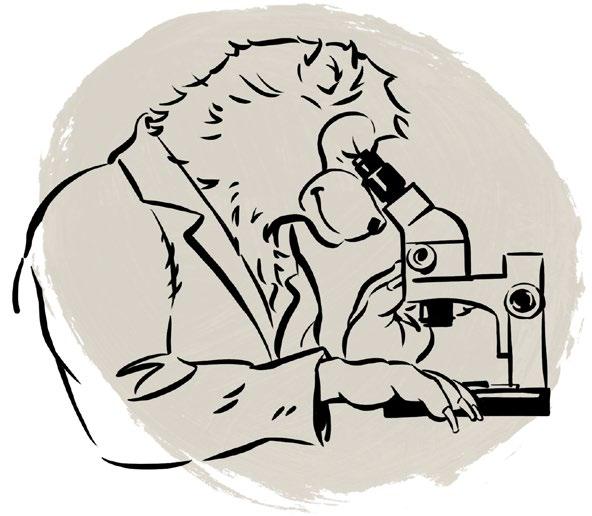
“Inequities are what lead to underrepresentation in STEM, and they begin with unequal and differential access to educational resources, support, and opportunities,” says IMSD@Brown’s Andrew Campbell, PhD, who co-leads the program with Associate Dean Beth Harrington, PhD.
“When inequities are eliminated, as through the work we’ve been doing with IMSD@Brown,” Campbell adds, “the success of underrepresented students becomes indistinguishable from the success of their peers.”
13
INCREASE IN GRADUATE STUDENT DIVERSITY OVER 10 YEARS
GRANT RENEWED OF FUNDING
NUMBERS
“When inequities are eliminated, as through the work we’ve been doing with IMSD@Brown, the success of underrepresented students becomes indistinguishable from the success of their peers.”
PROGRAM IN BIOLOGY
ANDREW CAMPBELL, PHD CO-LEAD, IMSD@BROWN
Improving Human Health
In October 2022, Brown launched a new operational plan to grow its research enterprise, with the goal of having an even greater positive impact on the world through the application of discoveries. With strengths in the basic sciences and clinical research, and strong collaborations with Brown’s School of Engineering and School of Public Health and the affiliated health care systems, the Division of Biology and Medicine is well positioned to push research through the full cycle of discovery to application to population-level evaluation. Along the way, inclusion and equity will remain at the forefront to ensure our discoveries and breakthroughs work for all people.


BROWN UNIVERSITY DIVISION OF BIOLOGY AND MEDICINE 2023 DEAN’S REPORT 14 RESEARCH
PRIORITY AREAS

Existing and Emerging Strengths
The Division’s priority areas for growth under this plan are aging and aging-related disease; cancer; brain health; immunology and infectious disease; and RNA biology.



Some existing areas of strength will be expanded, such as the Center on the Biology of Aging. Members of this center have made foundational discoveries of pathways involved in aging that are conserved in organisms all the way from fruit flies to humans. These investigators have developed therapeutics, launched companies, and even entered early-phase clinical trials for patients with dementia.
This is also true for the rapidly growing Legorreta Cancer Center. Thanks to the generous support of Pablo and Almudena Legorreta, the center has recruited a number of outstanding scientists, and in partnership with its affiliated health systems, is charting a course toward official designation by the National Cancer Institute.
Frontiers of Science
The Division has a growing focus on RNA biology. An effort to sequence the human RNome is gaining momentum, an undertaking that would be similar to the Human Genome Project that sequenced human DNA. The “human RNome project” is truly a transformative opportunity, one that promises to enormously enhance our ability to develop novel diagnostics and therapeutics for diseases that burden society. Brown is investing heavily in strengthening its RNA research capabilities and to establish this as a signature program for the University.

15 RESEARCH
RNA BIOLOGY
CANCER
AND INFECTIOUS DISEASE
AGING AND AGING-RELATED DISEASE
BRAIN HEALTH IMMUNOLOGY
Expansion Plans
The largest construction project in Brown’s history will house life sciences research.
If you want to push the frontiers of science, you need space to do it. Yet the Division’s primary research facilities are at or near maximum capacity.
Last year, Brown announced several projects that will help alleviate that space crunch, all in Providence’s Jewelry District. The new integrated life sciences building (ILSB) will provide state-of-the-art lab space for researchers in biology, medicine, brain science, bioengineering, public health, and other disciplines to work together on pressing health-related issues.
Excitement is Building
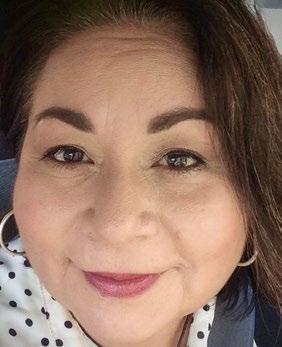
The architectural firms Deborah Berke Partners and Ballinger will design the facility, which Dean Mukesh K. Jain, MD, says “will enable Brown to implement a growth plan that supports research teams working on scales ranging from molecular-level science to biotechnology innovations, to the latest developments in patient therapies and interventions.”

The building will also present new opportunities for community-engaged research as well as communal spaces for new programming and outreach efforts.
Deepening the Lab Bench
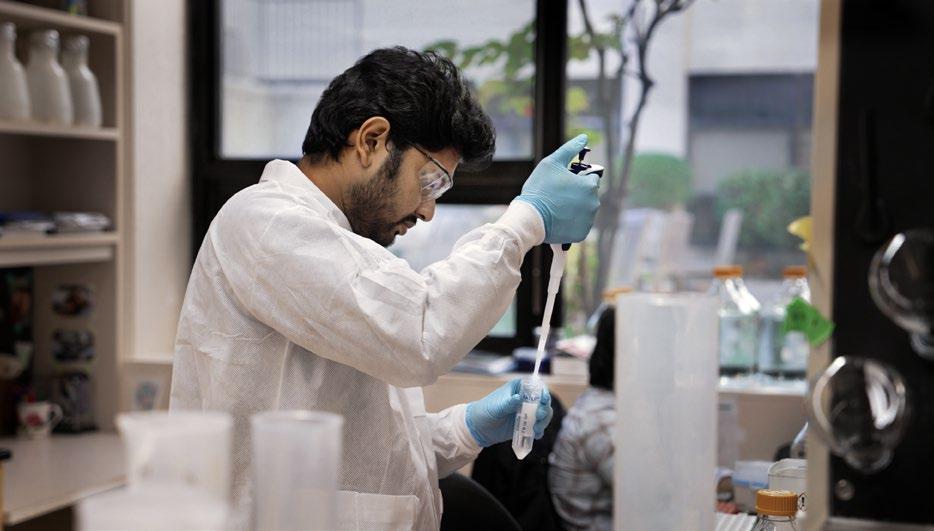
The Big Picture
While the new ILSB is the jewel in the crown of the University’s long-term plan to grow its overall research activity, it will take several years to build, and space is needed in the near term. To that end, Brown signed a letter of intent to lease 20,000 square feet of laboratory space in a major public-private life sciences development project anchored by the Rhode Island Department of Health State Health Laboratories. In addition, the University has leased approximately 31,000 square feet of new lab space in Wexford Science & Technology LLC’s Point 225 building on Dyer Street.
The Division is actively recruiting a diverse cadre of research scientists in the priority areas. The following faculty were appointed in the past year, with more slated to come on board in 2023.

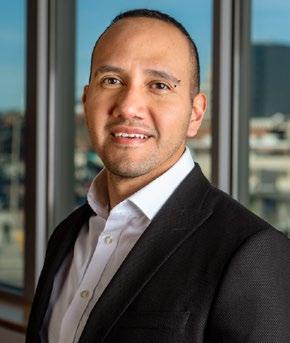
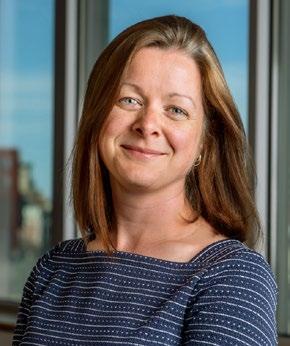
BROWN UNIVERSITY DIVISION OF BIOLOGY AND MEDICINE 2023 DEAN’S REPORT 16 RESEARCH
SOFIA B. LIZARRAGA, PHD Assistant Professor of Molecular Biology, Cell Biology, and Biochemistry
SENDURAI MANI, PHD Dean’s Professor of Translational Oncology
KATHERINE SIDDLE, PHD Assistant Professor of Molecular Microbiology and Immunology
CARLOS SILVAGARCÍA, PHD Assistant Professor of Molecular Biology, Cell Biology, and Biochemistry
ROBERT W. SOBOL, PHD Dean’s Professor of Cancer Research
The Right Combination
One of the most significant milestones that signaled a true shift toward a coordinated biomedical ecosystem was the November 2022 signing of an aligned research collaboration agreement by Brown and its two affiliated health systems, Lifespan and Care New England. Under this new structure, called Brown Innovation and Research Collaborative for Health, or BIRCH, the health systems will align their research operations with the Division of Biology and Medicine and School of Public Health in a unified enterprise. This alignment is creating one of the only entities in the country to integrate research from the petri dish to patients to population level.
Broad Impact



The benefits of a unified approach are threefold:
1 It will streamline the research administration process and allow researchers at each institution to be more productive in terms of publications, grants, and collaboration.
2 By aligning research and novel treatments, patients get better access to cutting-edge therapies and state-of-the-art approaches to their disease.
3 Great science with promising applications attracts biotech or biopharma investment, having a positive economic impact on the Rhode Island community. The close collaboration means the state can offer access to patient data and testing new therapies or diagnostics in patients and studying it at a population level.
A Joint Executive Council with representation from all three institutions will oversee the work to unify research operations. Working retreats began in February 2023 to hammer out separate financial and operational plans before final implementation.

17 IMPROVE INNOVAT E IM P L E M E N T RESEARCH
BROWN + LIFESPAN CARE NEW ENGLAND PRECLINICAL RESEARCH CLINICAL RESEARCH POPULATION HEALTH
Providing Care for All
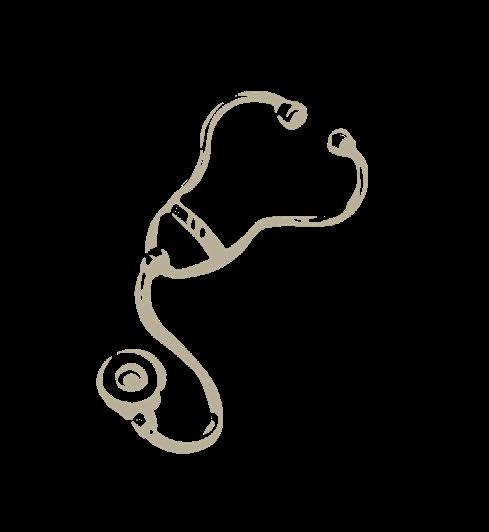
At the heart of any academic medical center are patients. By working in collaboration with hospital partners to recruit and retain faculty from diverse backgrounds, to engage in cutting-edge research that gives patients access to lifesaving care, and to address issues of health inequity, the Division can truly change the course of lives in Rhode Island and beyond.

BROWN UNIVERSITY DIVISION OF BIOLOGY AND MEDICINE 2023 DEAN’S REPORT 18
CLINICAL CARE
The Practice of Health Equity
Initiatives aim to make birth and the postpartum period safer for everyone.
Brown’s Department of Obstetrics and Gynecology, through its affiliated Women & Infants Hospital and community-based faculty, delivers about 80 percent of the babies in Rhode Island, and its patient population reflects the state’s.
Unfortunately, the state also mirrors nationwide rates of poor maternal and infant outcomes—which are significantly higher for patients of color than for white patients. Tackling these disparities has become a top priority for the department, led by Methodius Tuuli, MD, MPH, MBA, the Chace-Joukowsky Professor of Obstetrics and Gynecology.
“Equal access to quality care is our goal, but I will say it’s a goal that is not fully realized,” Tuuli says. Some challenges are outside of clinicians’ control, like lack of insurance or transportation, poor living conditions, or mistrust of the health care system.
Moving Forward
“There is data to suggest that patients who are cared for by physicians and providers of their same race and ethnicity tend to have better outcomes,” Tuuli says.
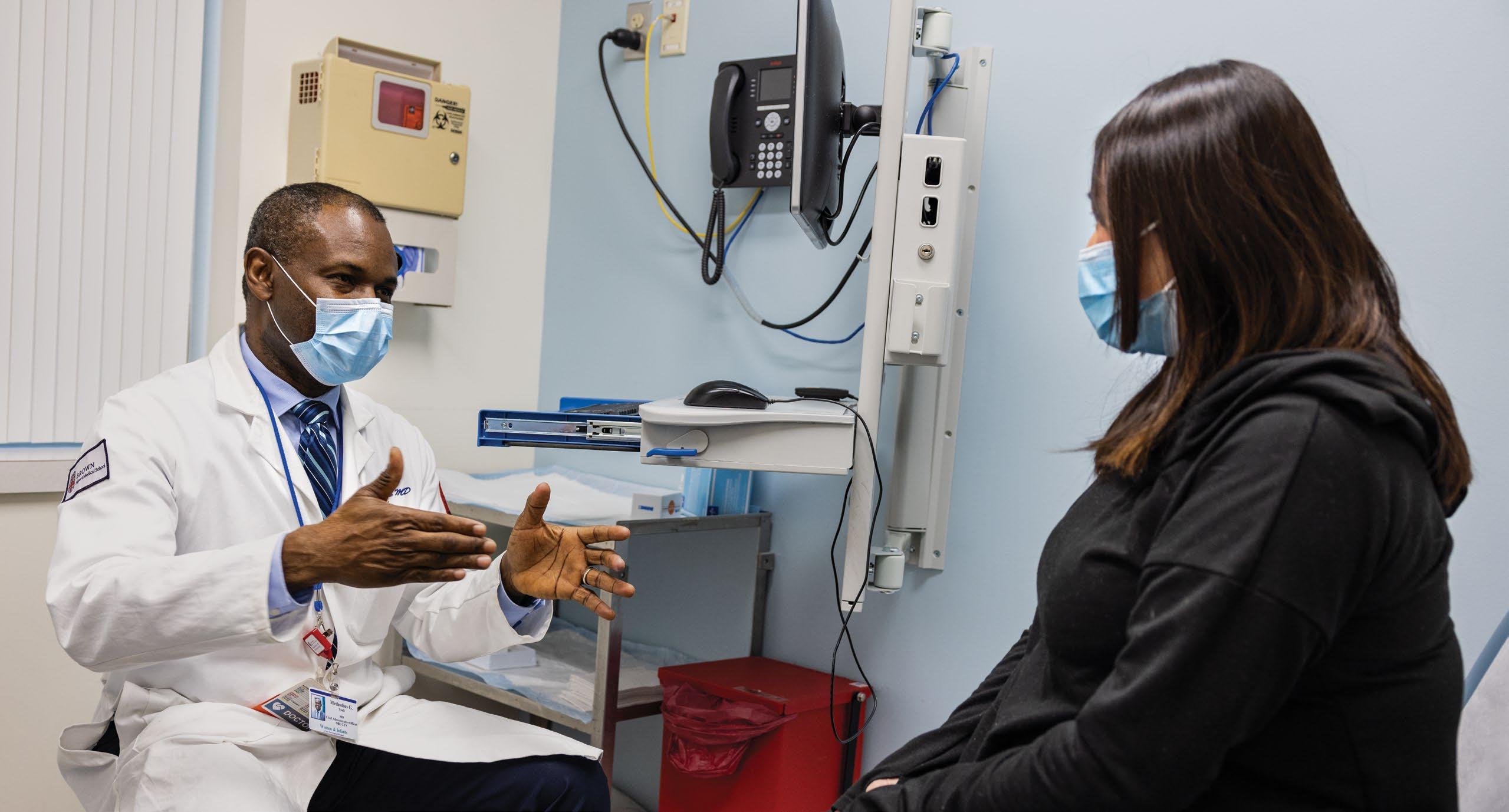
The department also has implemented practices like examining every single case for bias during morbidity and mortality rounds, with providers asking whether it may have affected the outcome. The exercise has yielded some changes, like greater patient access to interpreter services.
“The hospital and health system leaders are committed to this work,” Tuuli says. “It’s difficult, and some of these interventions won’t work. If it were easy, people would have done it already, right? … I’m just glad that we are starting.”
19
CLINICAL CARE
A New Crib for Rhode Island Babies
A $5 million gift from Brown will support plans by Care New England to build a new labor and delivery center at Women & Infants Hospital.
With a gift of $5 million, Brown is supporting the construction of a technologically advanced labor and delivery center at Women & Infants Hospital. The new Brown University Labor and Delivery Center will be a state-of-the-art facility designed to meet the needs of birthing families and their medical providers.
Emerging data show that there is a clear link between health care settings and safe clinical outcomes, and the labor and delivery units in the new center will create an exceptional environment to advance even further the Brown faculty’s clinical excellence. As Women & Infants is a core training site for Warren Alpert medical students, the Labor and Delivery Center will offer the opportunity
to learn in a facility designed to improve outcomes and provide patient-centered care.
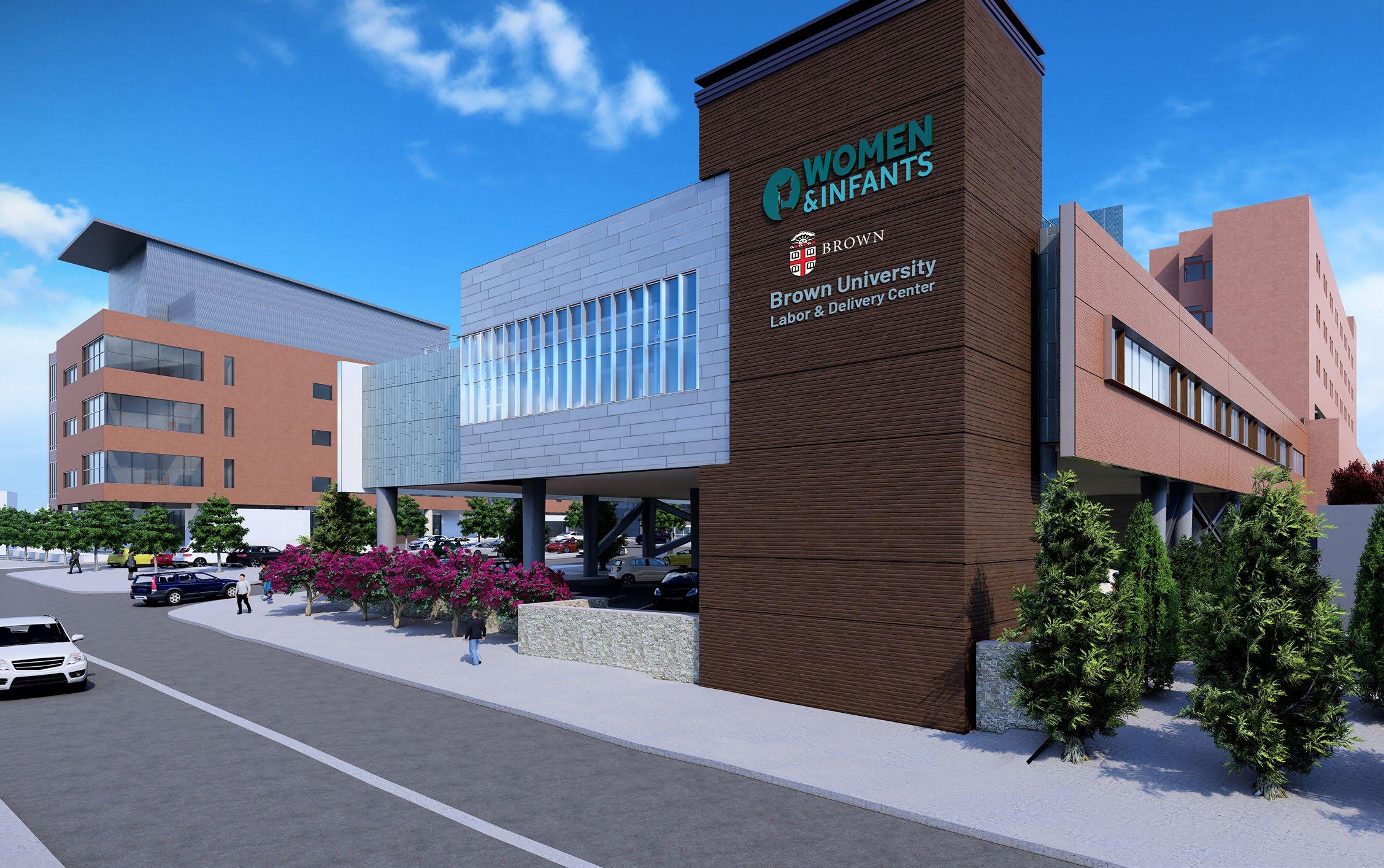
For the Families
“Brown’s support for the labor and delivery center not only reflects the important partnership between Brown and Care New England, but it also demonstrates how cooperation across institutions can serve the people of Rhode Island and elevate the level of health care in the state,” Brown President Christina H. Paxson said in announcing the gift. “Close coordination between physicians and researchers translates to excellent medical care and patient outcomes, and we’re pleased to support this project and the health of families from across the region.”
BROWN UNIVERSITY DIVISION OF BIOLOGY AND MEDICINE 2023 DEAN’S REPORT 20 CLINICAL CARE
Advancing Cancer Care
Cooperative efforts bring world-class physicians to Rhode Island.
New physicians at the Legorreta Cancer Center and the Lifespan Cancer Institute provide cutting-edge care for a full complement of cancer types.
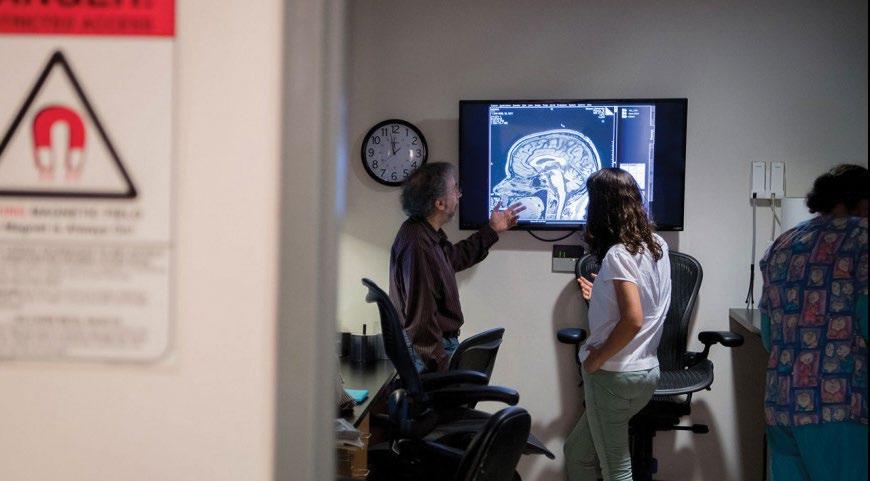
In 2022, oncologist Jeremy L. Warner, MD, arrived from Vanderbilt University. His clinical focus is hematologic malignancies, while his research focuses on cancer data science. A practicing clinician with a unique background in engineering, medicine, and biomedical informatics, Warner works at the interface of data and health care with the end goal of improving care for cancer patients. He is a professor of medicine and director of the Center for Clinical Cancer Informatics and Data Science.
Previous recruits to the Legorreta Cancer Center are yielding significant benefits for patients. Thoracic surgeon Abbas E. Abbas, MD, for example, led the establishment of the first robotic navigational bronchoscopy program in Rhode Island. It builds on a new lung nodule and screening program, which taken together contribute to cutting-edge care for the diagnosis and treatment of lung cancer, the leading cause of cancer deaths in the US. Other senior leaders include Stephanie L. Graff, MD, who leads the breast oncology program, and Eric T. Wong, MD, who leads medical neuro-oncology. Wong is establishing a neuro-oncology fellowship training program as he leads innovative therapeutic trials.
“We’ve been very successful recruiting leaders in both research and clinical care to Brown, with colleagues all over the country expressing interest in our cancer center programs,” says Wafik El-Deiry, MD, PhD, director of the Legorreta Cancer Center. “Demonstrating positive impact we are having on our community—whether it is in diagnosing, treating or preventing cancer—is not only critical as we work toward National Cancer Institute designation, it is truly gratifying.”
Jointly Appointed
Ted Huey will oversee the clinical research on Alzheimer’s and other dementias.
In February 2023, Edward “Ted” Huey, MD, became the director of the Memory and Aging Program at Butler Hospital and joined the faculty at Brown as a professor in the Department of Psychiatry and Human Behavior. Huey came from Columbia, where he was the director of the Frontotemporal Dementia Center and a professor in the Taub Institute for Research on Alzheimer’s Disease and the Aging Brain.
Connecting Across Campus
As director of the Memory and Aging Program, Huey will oversee the program’s clinical, research, and community outreach operations. He will guide its work with health care providers, community groups, other research organizations, and members of the Rhode Island community who are interested in and willing to participate in Alzheimer’s disease research. He’ll also make connections with neuroscientists and cognitive scientists as part of the Carney Institute for Brain Science.
Huey’s own research has focused on patients with frontotemporal lobar degeneration (FTLD) and related disorders. “One of my two grants is investigating how to use innovative cognitive and emotional neuropsychiatric paradigms to understand Alzheimer’s and FTLD symptoms better. For example, we know now that most of these disorders present with not just cognitive symptoms but changes in behavior, mood, sleep, and appetite,” he says. “I’m really interested in learning more about the dimensional commonalities across these modalities.”
21 CLINICAL CARE
COMMUNITY ENGAGEMENT
Fulfilling Our Responsibility to the Community

Having a robust approach to community engagement is central to the mission of The Warren Alpert Medical School, which is to support and promote the health of individuals and communities. The Division is committed to contributing meaningfully to improving health outcomes in Rhode Island by deliberately and intentionally engaging communities in the state. We will do that by engaging early, often, and with humility, centering the community in our planning, and earning trust through our actions.

BROWN UNIVERSITY DIVISION OF BIOLOGY AND MEDICINE 2023 DEAN’S REPORT 22

A Network of Pathways
Programs expose area children and adolescents to health careers, and set them on the path to achieve their goals.
Last fall, students in Central Falls started learning more about how good health impacts every aspect of life—and how they can someday become health care professionals.
Calcutt Middle School is now home to a SMART Health and Wellness Center and the inaugural site for SMART Plus, an initiative led by The Warren Alpert Medical School that’s designed to spark early interest in health and medicine careers.
Joseph Diaz, MD, MPH, associate dean for Pathway Programming in the Office of Belonging, Equity, Diversity, and Inclusion, says the medical education component is particularly important given Central Falls’ federal designation as having a shortage of health professionals in relation to the population.
“We are extremely excited about the opportunity to introduce Central Falls students to a variety of careers in health care and to increase their sense of possibility in terms of what types of professional futures are available to them,” Diaz says. “This opportunity provides students access to ongoing mentorship and conversations about health and health care careers.”
Reaching All Levels of Education
The initiative is part of a broader set of pathways programs led by the Medical School. At HealthCORE
and Meeting in the Middle, medical student volunteers introduce middle- and high-schoolers to health careers, including dentistry and public health. There’s an April vacation program for juniors and seniors interested in surgical professions, and a six-week summer internship for high school students who want to explore research careers in pathology.
Another summer program, Week of Medicine, offers rising 10th- and 11th-graders hands-on learning and mentorship opportunities. Maribel Veiga, a Central Falls High School student and aspiring cardiologist, says it was a meaningful experience.
“Some of my family members have had health problems, and I felt like I couldn’t solve them,” she explains. “That made me feel helpless. I want to become someone who knows how to solve these types of things, who can help people.”
Month of Medical School, for pre-med undergraduates from the University of Rhode Island, Providence College, and Rhode Island College, offers a taste of medical school-level coursework, connections with mentors, and the chance to shadow physicians— experiences that will make them attractive medical school candidates.
BROWN UNIVERSITY DIVISION OF BIOLOGY AND MEDICINE 2023 DEAN’S REPORT 24 COMMUNITY ENGAGEMENT
“This opportunity provides students access to ongoing mentorship and conversations about health and health care careers.”
JOSEPH DIAZ, MD ASSOCIATE DEAN FOR PATHWAY PROGRAMMING, OFFICE OF BELONGING, EQUITY, DIVERSITY, AND INCLUSION
Summit Inspires Future Physicians

Black Men in White Coats introduces students from backgrounds underrepresented in medicine into the profession.

On a beautiful autumn day in October, more than 200 people flocked to The Warren Alpert Medical School for its first Black Men in White Coats Youth Summit. The free public event boasted a full day of workshops, forums, and presentations intended to introduce kids and families to careers in health and medicine and offer opportunities for mentorship and networking.
Black Men in White Coats was founded in 2013 in response to alarming data from the Association of American Medical Colleges showing that the already low number of Black males applying to medical school was falling even further. The summit, one of several hosted across the US, was geared toward kids in grades three and up—particularly from groups underrepresented in medicine—as well as the people supporting and raising them.
Opening the Doors
“Diversifying our workforce is a key priority in medicine. But children can’t be what they can’t see,” says Patricia Poitevien, MD, MSc, senior associate dean for Diversity, Equity, and Inclusion. “As a pediatrician I often talk to my patients about my career, and see
the impact it has on them and their families to have a physician of color. But that is not enough. This event was our way of connecting families, children, and community leaders across New England to all the amazing Black physicians here at Brown, so they can see the possibilities, be inspired, and leave empowered. Their success is our success.”
The summit’s goal of career inspiration went hand-inhand with personal connection. Many speakers shared not only their stories but their contact information, laying the groundwork to build opportunities for local youth and create a community of educators, parents, and health care professionals committed to increasing diversity in medicine.
Tenth-grader Devon Edwards said he and his mom drove more than an hour from Falmouth, MA, because his principal recommended the event and knew he’d be interested. Indeed he was—Edwards was especially impacted by hearing a wide range of personal experiences and learning about different professional journeys. Previously, he said, he hadn’t specifically been considering a career in health or medicine.
“But after today,” he said, “I am now.”
25
COMMUNITY ENGAGEMENT
Caring for Those Who Care for Others

One of the many lessons learned from the COVID-19 pandemic is that physicians, scientists, and health care workers are humans too—they need care and protection as much as those they care for. The Division of Biology and Medicine has made the well-being of learners, faculty, and staff a core priority.

BROWN UNIVERSITY DIVISION OF BIOLOGY AND MEDICINE 2023 DEAN’S REPORT 26
FOUNDATIONAL BELIEF
WELLNESS
Tamping Down Burnout
The division’s chief wellness officer works to make systemic changes to improve well-being.
“How can we be at the right tables with the right people to make the big-picture changes that need to happen to help people at all levels?”
3 in 5
PHYSICIANS REPORTED AT LEAST ONE SYMPTOM OF BURNOUT DURING THE HEIGHT OF THE COVID PANDEMIC
A year later, she was at those tables. Dean Mukesh K. Jain expanded Holder’s purview to encompass the entire Division and elevated her to his senior leadership council. He also embedded wellness in the foundation of his strategic outlook for the Division, along with belonging, diversity, equity, and inclusion and social responsibility. All aid in job retention, performance, and satisfaction, and produce happier and healthier workers—and patients.
Self-Study
Health care professionals are notoriously vulnerable to burnout. Even before the COVID-19 pandemic, 30 to 50 percent of medical students, residents, and physicians reported symptoms like emotional exhaustion and compassion fatigue; that rate grew to 63 percent during the Omicron wave of 2021-2022. Yet burnout is often ignored or downplayed as an unfortunate yet inevitable side effect of the job.
“The physician’s inclination is to focus on patients and put their own health last. But this contributes to burnout and can cause talented, caring professionals to leave the field,” says Kelly Holder, PhD, BioMed’s firstever chief wellness officer.
Holder, a clinical psychologist, came to Brown in 2021 to focus on the wellness needs of medical students by developing and providing support, guidance, and tools to protect and preserve their mental health. Even then, she knew a much bigger task awaited her.
Broadening the Mission
“A challenge for wellness officers in any health system is figuring out how to evoke widespread change and make wellness more accessible and realistic,” Holder says.
Since last summer, when her scope grew to include all BioMed students, trainees, faculty, and staff, Holder has been meeting with departments and offices across the Division to understand the organization and how she can support everyone in it. She wants to know: “Do you feel important? Are you seen? Are you heard? If there are problems, do your supervisors listen and do something about it?”
After meeting with each unit, Holder created wellness focus groups, open to all members of the community, to identify sources of burnout and what she calls “pebbles in the shoe—the things that rub up against us that make the work environment difficult.” To tackle systemic changes, she envisions “wellness leaders” in each area who will look for ways to improve work life, from email policies to staffing levels. “I can’t be in every department, on every team,” she says.
Holder acknowledges that, as she gets started, she is asking busy people to do “one more thing” in a system that doesn’t allow them the time and space to do so. She hopes that, by tackling the system itself—with the blessing of administration—what seems like additional work now will ultimately relieve stress and burden. “People would like to know they’re not wasting their time talking with me, that it’s going to go toward something,” she says.
27 FOUNDATIONAL BELIEF: WELLNESS
ADVANCEMENT
Philanthropy Is the Key
Generous support from alumni, parents, and friends has made possible much of the growth in all four areas—research, education, clinical care, and community engagement. Philanthropic support will also be critical to achieving many of the goals set for the coming years.

BROWN UNIVERSITY DIVISION OF BIOLOGY AND MEDICINE 2023 DEAN’S REPORT 28
Advancing Diversity in Medicine
Scholarships help ensure that the physician workforce looks like the communities it serves.
The Warren Alpert Medical School is committed to supporting students underrepresented in medicine throughout their journey at Brown, from admission through graduation and beyond, and boasts a growing number of philanthropic initiatives to support that mission. The Advancing Diversity in Medicine Term Scholarship is one such effort—now a perennial priority within the Brown Medical Annual Fund.
For many students, paying for a medical education can be a huge barrier. Establishing this annual term scholarship provides an opportunity for students from diverse backgrounds to avail themselves of all that a Brown medical education has to offer.


Mentor in the Making
Mario Ojadi MD’25 was the inaugural recipient of the Advancing Diversity in Medicine Term Scholarship. Born in Nigeria,

Ojadi’s medical interests are in psychiatry and emergency medicine, and he has centered his research around risk factors and screening of depression in adolescents with autism spectrum disorder.
Ojadi hopes to be a role model and mentor to the next generation of Black men in medicine, and he is already making great strides to fulfill this by serving as chapter co-president of the Student National Medical Association (which supports current and future underrepresented minority medical students), volunteering at Mary House meal kitchen and food pantry in Providence, and assisting as a case coordinator for the Brown Human Rights Asylum Clinic.
29
EDUCATION
MARIO OJADI MD’25
RESEARCH
National Recognition in Our Sights
Discoveries in cancer are at the center of the next phase of growth at Brown.
After surpassing its original $3 billion BrownTogether campaign goal early in the fall of 2021, Brown set a new $4 billion goal—extending the campaign through 2024. Key priorities for the extension include raising funds for research and teaching in medicine.
Investing in Excellence
A milestone gift to augment Brown’s biomedical enterprise came from Pablo and Almudena Legorreta P’21 to rename the University’s cancer center, accelerate discovery, and turn basic science into treatments for patients locally and worldwide.
“I’m a passionate believer in the ability of science to advance progress and facilitate change,” Pablo Legorreta says. “It’s a privilege to be able to support the Brown cancer center’s mission of advancing scientific research to find better ways to treat cancer and improve patient care.”
Recruiting the Best and Brightest
With faculty being a central part of this investment, Robert Sobol, PhD, was recently recruited to Brown to be the associate director for basic research, Dean’s Professor of Cancer Research, and professor of pathology and laboratory medicine. An internationally recognized expert in the area of DNA repair and tumor metabolism, his appointment will support strategic growth and propel the center to the next level of excellence, including National Cancer Institute designation—a standard for state-of-theart research.
Another recent recruit is Sendurai Mani, PhD, Dean’s Professor of Translational Oncology, professor of pathology and laboratory medicine, and associate director for translational oncology. He studies cancer progression and why tumors become aggressive and drug resistant. Mani will lead efforts to expand the translation of discoveries to patient populations.
Health Goes to School
The Medical School partners with a local school district to spark student interest in health careers.
COMMUNITY ENGAGEMENT
Calcutt Middle School in Central Falls, RI, is now home to a SMART Health and Wellness Center and the inaugural site for SMART Plus, an initiative led by The Warren Alpert Medical School that’s designed to spark student interest in health and medicine careers.
At Calcutt’s SMART clinic, funded by The Warren Alpert Foundation, clinicians identify and address the physical, behavioral, social, and emotional risks to classroom success, then

design and deliver interventions through on-site, real-time health services. The clinics, which include nurses, social workers, and other health professionals, treat all students without regard to insurance or immigration status. Meanwhile the SMART Plus pathways program will introduce Calcutt students to medical education.
As part of a competitive awards program, Brown’s proposal for the SMART Plus Pathways program was selected by the Foundation to

BROWN UNIVERSITY DIVISION OF BIOLOGY AND MEDICINE 2023 DEAN’S REPORT 30 ADVANCEMENT
Improving Health Through Better Nutrition
Endowed professorships help attract leading clinicians.
According to the National Institutes of Health, 42 percent of Americans have obesity, and its prevalence is increasing. George A. Bray Jr. ’53, MD, and faculty member Caroline R. Richardson, MD, have both dedicated years to the study of obesity and the profound impact that research in this area can have on clinical care.
With a gift of $4 million, Bray and his wife, Marilyn, established the George A. and Marilyn M. Bray Professorship to advance the fields of endocrinology and nutrition. Richardson, chair of the Department of Family Medicine, was appointed the inaugural recipient. Her work as a diabetes prevention researcher dovetails with George Bray’s life’s work in exploring the biological underpinnings of obesity.
Saving Lives and Dollars
With high blood pressure, high cholesterol, type 2 diabetes, asthma, sleep apnea, and joint problems being just some of the complications associated with obesity, it is one of the costliest health issues in our country. It’s also one where racial and ethnic disparities persist.
For Richardson and her team, this gift is a tremendous opportunity. She writes, “This Professorship will help us take the next step in supporting critical research about systems and strategies for disseminating effective obesity treatment for those patients, families, and communities who are at the highest risk for health problems associated with obesity.”
receive $2.4 million in support. The grant is covering all technical assistance, training, start-up operations, and infrastructure costs to develop the new SMART site, while the Medical School will fund an additional $2.4 million in program costs.
Historic Partnership
Over the past two years, The Warren Alpert Foundation also has funded high-impact projects at Brown, such as the research and development of an mRNA malaria vaccine
for children and a novel therapy for pancreatic cancer. The total amount from the Foundation—$14 million—supports a variety of innovative research and education initiatives, aimed at ultimately improving the health and well-being of people in Rhode Island and beyond.
The Warren Alpert Foundation is also the largest philanthropic donor in the School’s 50-year history, giving $100 million in 2007, which renamed the School, and $27 million in 2016 to support the training of physician-scientists.

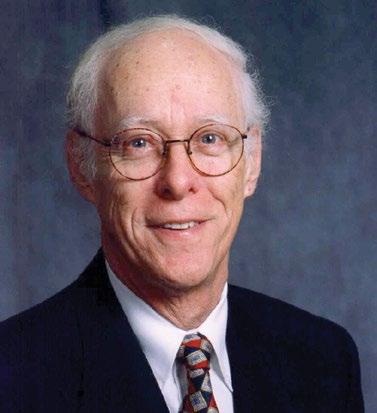
31 ADVANCEMENT
CLINICAL CARE
GEORGE A. BRAY ’53
50 Years of Medicine at Brown

In March 2022, Brown University kicked off a 15-month long celebration of the establishment of the four-year medical program. A series of celebratory, reflective, and scholarly activities have honored the distinctive and innovative elements of Brown’s approach to medical training and biomedical innovation, characterized by a unique focus on promoting the health of individuals and communities through service to society.
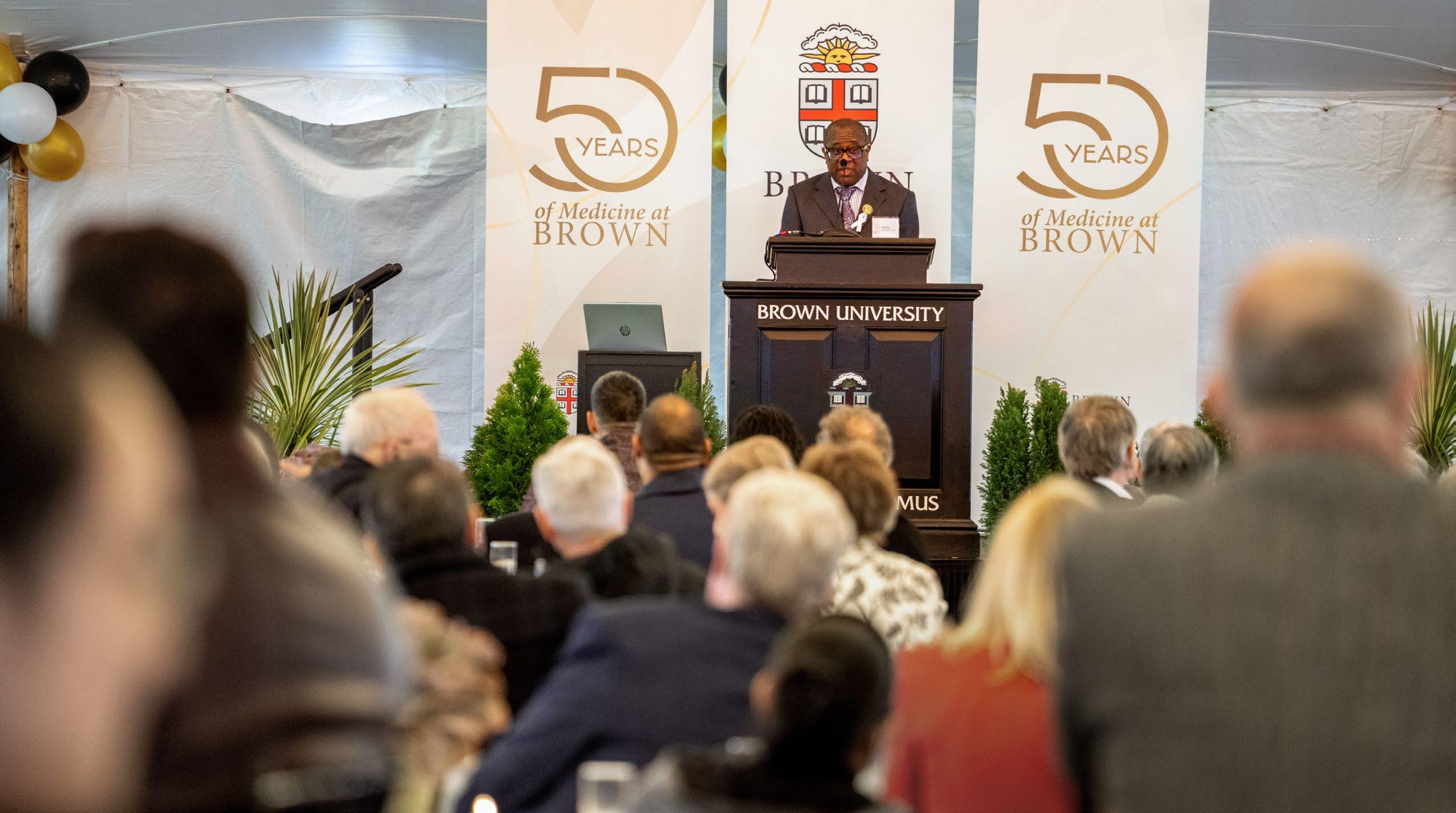
The celebration has been focused on three themes that honor the Medical School’s past, present, and future:
— A distinctive approach to medical education.
— A legacy of improving human health.
— A future of discovery, bright with promise.
BROWN UNIVERSITY DIVISION OF BIOLOGY AND MEDICINE 2023 DEAN’S REPORT 32
LEGACY
Celebrate Good Times
At the community-wide kick-off reception in April 2022, the mood was festive, like a family reunion, as Medical School alumni, students, faculty, and former colleagues from across the last five decades greeted each other joyfully. The keynote speaker, US Sen. Jack Reed, who has represented Rhode Island in Congress since 1991, recalled growing up in Cranston in the 1950s and ’60s when expert medical care was unavailable locally. But that all changed with the launch of Brown’s medical education program, he told the audience.
“For 50 years, the Medical School has served this community—the state of Rhode Island,” Reed said. “It’s turned out generations of exceptional doctors and leaders in the field, advanced discovery and innovation, and responded to evolving health care needs. And it has shared new knowledge with medical students and doctors worldwide. This institution has had a tremendous impact here in Rhode Island and far beyond.”
WaterFire

The half-century of innovation in medical education and research took center stage in October at a Brownsponsored lighting of WaterFire, the multimedia art installation in which 80 bonfires crackle on top of Providence’s riverway. To bring medical education and research to life for visitors from across the region, the Medical School featured a series of educational exhibits and interactive sessions. Medical students hosted a Teddy Bear Clinic for children, teaching them about important health concepts through a stuffed animal they were allowed to keep.
The night was a celebration of the Ocean State as much as it was medicine at Brown. “Care for communities across Rhode Island, our 50 years of educating the next generations of doctors and scientists, and 50 years of innovations that have changed the face of science and medicine—it’s really remarkable,” Dean of Medicine and Biological Sciences Mukesh K. Jain told the crowd. “Everything that we have achieved could not have been done without the community’s support. Every Rhode Islander is a part of this school’s history.”
STARTED
To learn more about 50 Years of Medicine at Brown and its upcoming closing event in May, visit go.brown.edu/50yearsofmedicine. While there, check out the interactive timeline of milestones from the early 1960s to the present day.

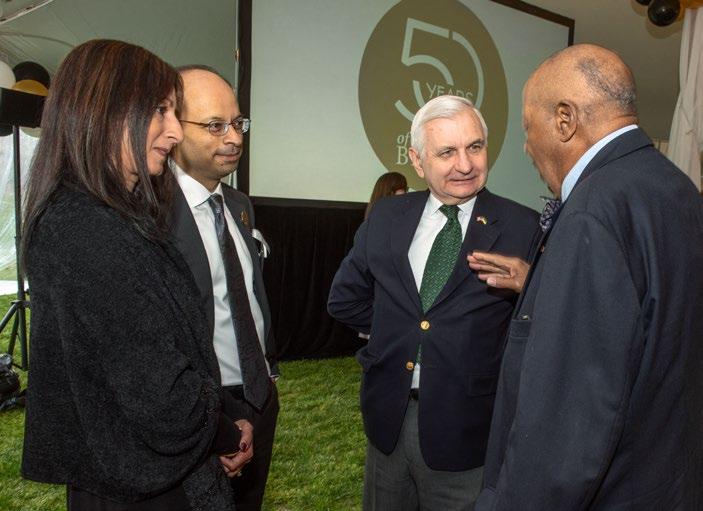
33 LEGACY
FROM THE BOTTOM, NOW WE’RE HERE
FINANCIALS

BROWN UNIVERSITY DIVISION OF BIOLOGY AND MEDICINE 2023 DEAN’S REPORT 34 TOTAL DIVISION OF BIOLOGY AND MEDICINE ENDOWMENT $799,196,836 FY’22 TOTAL SPONSORED ACTIVITY $262,909,903 Campus and Affiliated Hospitals TOTAL CAMPUS SPONSORED ACTIVITY $73,611,078
AFFILIATED HOSPITAL SPONSORED ACTIVITY $189,298,825 LIFESPAN $126,244,218
Island Hospital,
Hospital,
Hospital CARE NEW ENGLAND $38,355,608
& Infants Hospital,
Hospital,
Hospital PROVIDENCE VA HEALTH CARE $24,698,999
TOTAL
Rhode
The Miriam
Bradley
Women
Kent
Butler
PERCENTAGES DO NOT TOTAL 100 DUE TO ROUNDING
35
FINANCIALS
Expenses Revenues
LEADERSHIP
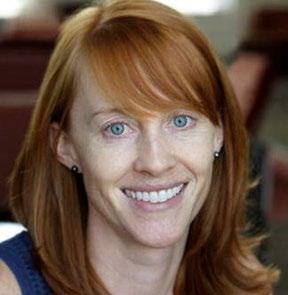
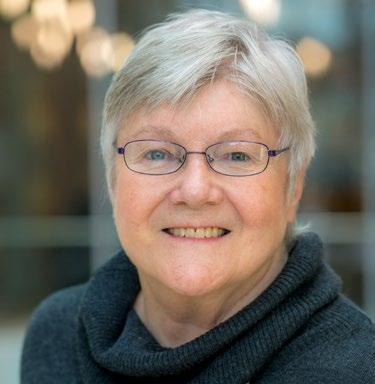





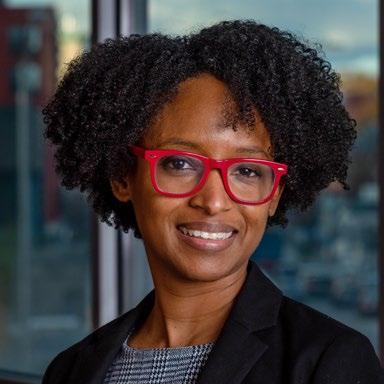
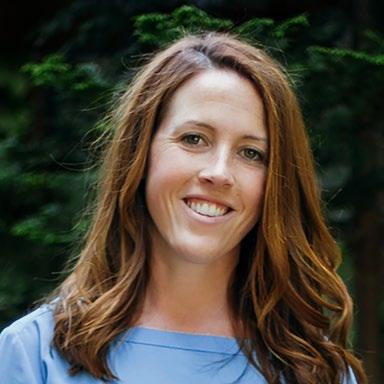

BROWN UNIVERSITY DIVISION OF BIOLOGY AND MEDICINE 2023 DEAN’S REPORT 36
MICHELE G. CYR, MD Senior Associate Dean for Academic Affairs
CAILIE BURNS Associate Dean for Biomedical Advancement
KELLY HOLDER, P h D Chief Wellness Officer
MUKESH K. JAIN, MD Senior Vice President for Health Affairs Dean of Medicine and Biological Sciences
KIMBERLY A. GALLIGAN, MBA Vice President for Clinical Affairs and Strategy and Chief Operating Officer
B. STAR HAMPTON, MD Senior Associate Dean for Medical Education
EDWARD HAWROT, P h D Senior Associate Dean for the Program in Biology
PATRICIA POITEVIEN, MD, MS c Senior Associate Dean for Diversity, Equity, and Inclusion
SHARON I. ROUNDS, MD Associate Dean for Translational Science
KATE F. SMITH, P h D Senior Associate Dean of Biology Education

Follow us: Brown University
Division of Biology and Medicine
Box G-A1
Providence, RI 02912, USA
401-863-3330
Office_of_Biomed_Communications@brown.edu
biomed.brown.edu
@BrownMedicine
facebook.com/BrownMedicine
@alpertmedicalschool
IMAGE CREDITS: JARED LEEDS; DAVID DELPOIO; KATHLEEN DOOHER; ASHLEY MCCABE; JESSICA SCRANTON; NICK DENTAMARO PHOTO & COLOR RETOUCHING: MARTHA DIMEO; CHROMAQUEEN.COM | DESIGNED BY ORANGE SQUARE

















































































